Tasty – Healthy & Versatile
With the onset of the winter season, the chill and the dew drops, the mist and the cool winds all around give us a feeling of taking it easy at times but somehow the cravings and hunger pangs are difficult to handle for some. We all love to pick and munch on the not-so-healthy options too once in a while to achieve satiety levels and calm the mind and feel good skipping that strict food routine and diet. Winter season usually creates more hunger and we feel like to sometimes overeat as well which may not be advisable always. Here is one healthy and wholesome veggie which we must pick and add to our shopping cart this winter season and cook up some treats!
Also Try: The Tropical Treat
The turnip or shalgam as it is also called is a root vegetable commonly grown in temperate climates worldwide for its white, fleshy taproot. The word turnip is derived from Latin word called Napus, the word used for the plant. The turnip or white turnip is a root vegetable. It is commonly grown in temperate climates worldwide for its white, fleshy taproot. There are over 30 varieties of turnips which differ in size, colour, flavour and usage. Purple-top turnips are the most common type. Smaller kinds of turnips are grown for human food. Larger ones are grown to feed livestock.
Also Try: IDLI IDEOLOGY
The most common type of turnip is mostly white-skinned apart from the upper part which protrudes above the ground and is purple or red or greenish where the sun has hit. The turnip is a hardy biennial plant in the mustard family. which are closely related) in flavour. The turnip is a cool-season crop but does not require a long growing season. In mild climates, turnips are sown either in early spring or in late summer and develop rapidly enough to produce a crop before extremes of summer or late fall weather occur.
Also Try: CHATPATA CHAATS ON A PLATTER
Young turnip roots are eaten raw in salads or pickled, they are also cooked and served whole or mashed and are used in stews Turnip greens are a common side dish in southeastern U.S. cooking, primarily during late fall and winter. Turnip roots are an excellent source of dietary fibre, vitamin C and vitamin B6, folate, calcium, potassium, and copper. The greens are an excellent source of vitamins A and C, as well as a good source of calcium, iron, and riboflavin. Some evidence shows the turnip was domesticated before the 15th century BC; it was grown in India at this time for its oil-bearing seeds.
Also Try: COOKING USING PRESSURE COOKER
The turnip was a well-established crop in Hellenistic and Roman times, which leads to the assumption that it was brought into cultivation earlier. In Roman times, the turnip was the weapon of choice to hurl at unpopular public figures.
What are the 3 health benefits of turnips? Turnips are loaded with fibre and vitamins K, A, C, E, B1, B3, B5, B6, B2 and folate (one of the B vitamins), as well as minerals like manganese, potassium, magnesium, iron, calcium and copper. They are also a good source of phosphorus, omega-3 fatty acids and protein.
Also Try: FESTIVE SWEET DELICACIES
What are turnips grown for? – Fast-maturing and easy to grow, turnips always emerge as stars in the autumn garden. Sown after summer crops of onions, squash, beans or sweet corn, turnip seeds germinate within days, and tender greens are ready to pick within a month. Juicy roots come later, and you can grow turnips for greens, roots, or both.
Storing Turnips- Turnips store very well, which is one of the reasons you see them long into the winter season. Once its green top is removed, the root will keep for a few months in a dry, sealed container, much like the potato and other root vegetables.
Also Try: WAYS WITH VERMICELLI
Cooking with Turnips- Pro tips: If you’re put off by the sometimes bitter flavour of turnips, make sure you generously peel them before cooking. When you slice a turnip in half, you’ll notice a yellow line about a quarter of an inch into the root. Peeling beyond that line is a way to prevent a bitter batch of turnips. Some also claim that boiling turnips with potatoes will decrease bitterness.
Preserving Turnips- Turnips’ peppery flavour makes them perfect for pickling. You can also freeze your winter haul by peeling, slicing and blanching the turnips. After a plunge in an ice bath to stop the cooking process, you can vacuum seal or transfer it to sealable containers and store it in your freezer for months.
Also Try: BRUSCHETTAS TO BINGE
Turnips Nutrition- Turnips are rich in Vitamin C and contain good amounts of Vitamins B-6, A and K in addition to trace minerals. But it’s the greens that pack a nutritional punch with a hefty dose of Vitamins A, C, and K, calcium, folic acid and manganese. Turnips are also low in calories as they are mostly fibre and water. A very good source of dietary fiber, vitamin C, and manganese. Turnip greens are a superfood packed with nutrients. They are a good source of protein, thiamine, riboflavin, pantothenic acid, iron, and phosphorus.
Here are a few Health Benefits of Turnips:
- Turnips are considered good for boosting immunity levels in our body, and are also good for heart health.
- Turnips are good for the health of our lungs and also help treat common ailments.
- Turnips improve metabolism and also help in digestion.
- Turnips are common anti-oxidants and anti-cancer.
- Turnips have a high quality of Vitamin – C and lower high blood pressure.
- Turnips are rich in beta-carotene and dietary fiber which is beneficial for our health and diets.
- Turnips are rich in potassium, calcium, manganese etc which add value to our foods.
- Turnips are helpful in curing asthma and also help in weight loss.
- Turnips are rich in minerals for our body development and prevent body odour.
- Turnips are good for detoxifying our blood, and also good for cardiovascular health.
“Turnips or Shalgam is a well-known winter vegetable which is not only loaded with nutrients but can also be added to a number of culinary delicacies under various categories of recipes and under global cuisines”- Dr. Kaviraj Khialani
Here are a few easy-to-make recipes using Turnips or Shalgam!
Recipe-1] TOSSING UP SHALGAM SALAD
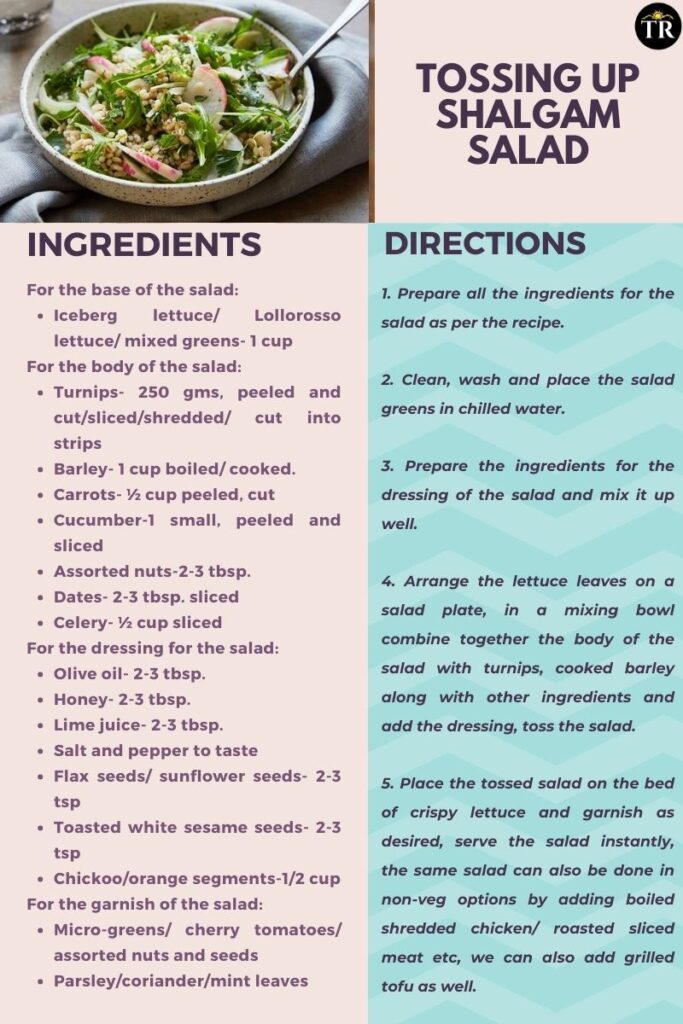
Recipe-2] SHALGAM DIL BAHAR
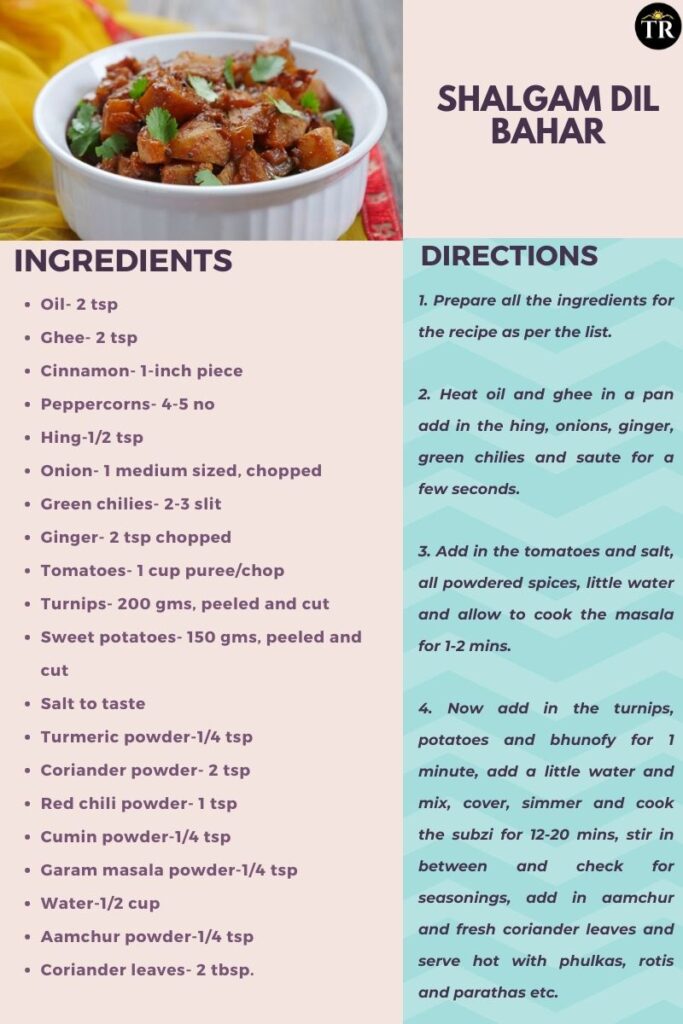
Recipe- 3] SHALGAM KA VIDESHI ANDAZ
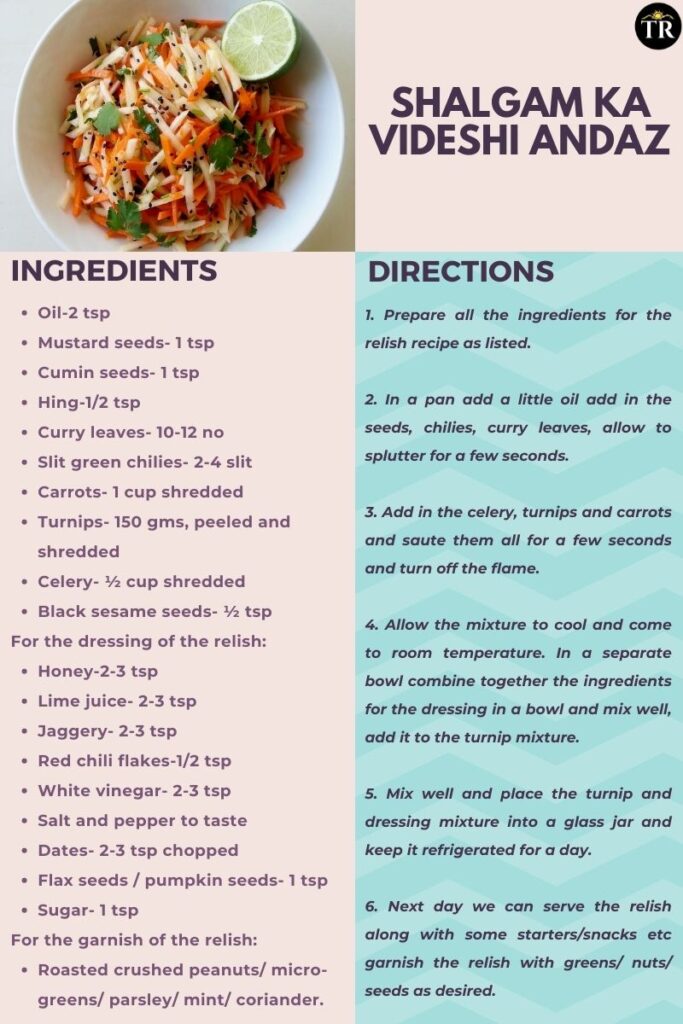
Recipe- 4] SHALGAM WALA SHORBA
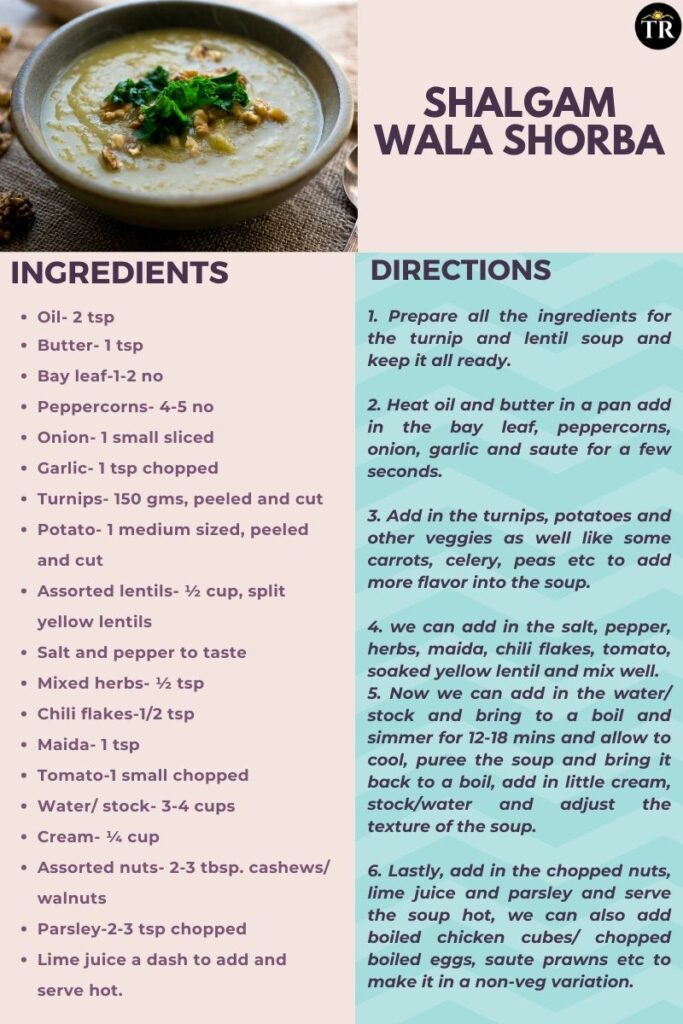
Disclaimer: The views expressed in this article are of the author solely. TheRise.co.in neither endorses nor is responsible for them. Reproducing this content without permission is prohibited.
About the author
Dr. Kaviraj Khialani, celebrity master chef is a Mumbai based food and hospitality consultant. He is specialised in over 33 plus international cuisines & is a two times national award winner for his excellence in his field of expertise. Chef Kaviraj has worked with some of the reputed hotel chains & airline companies in India & Overseas. He is a renowned academician, food designer & author- writer on food and culinary features, besides having been featured on Colors Television & Star plus he loves trying global fusion cooking promoting Indian food on an international platter for the diaspora.

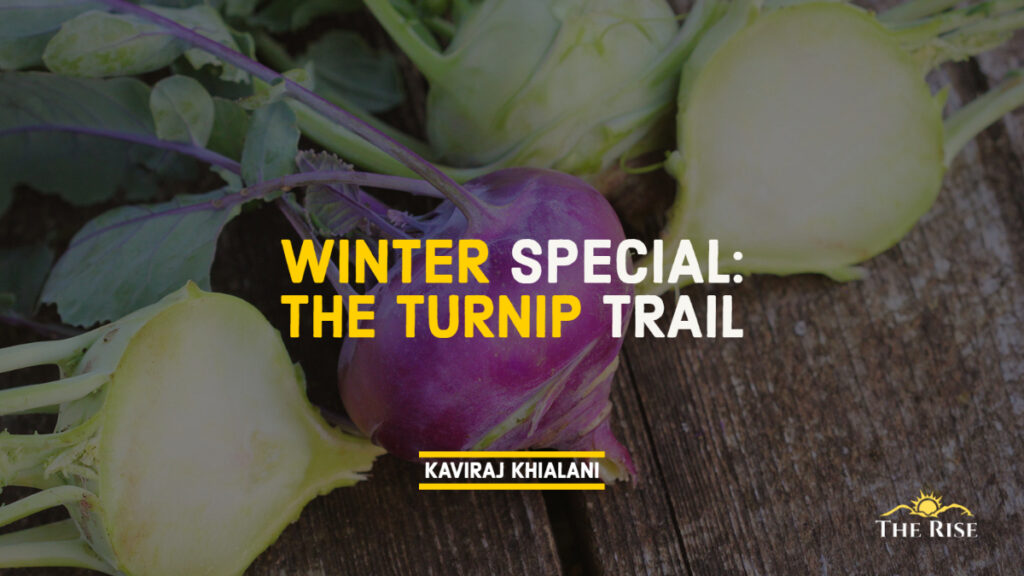





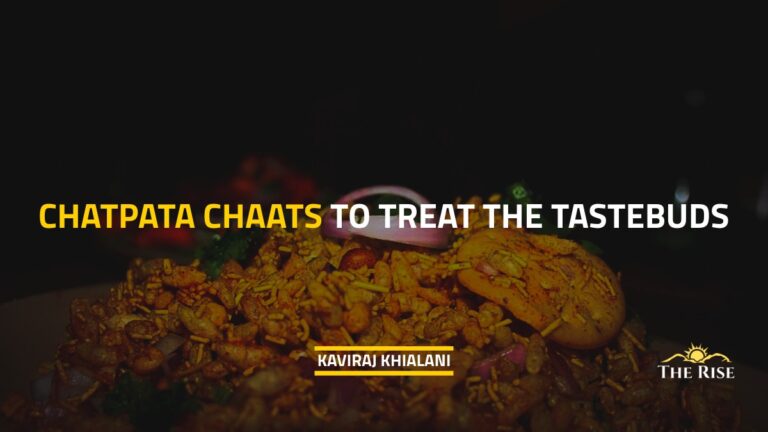



Pingback: INNOVATIVE CULINARY IDEOLOGY - TheRise.co.in
Pingback: FESTIVE SEASON SPECIAL - TheRise.co.in